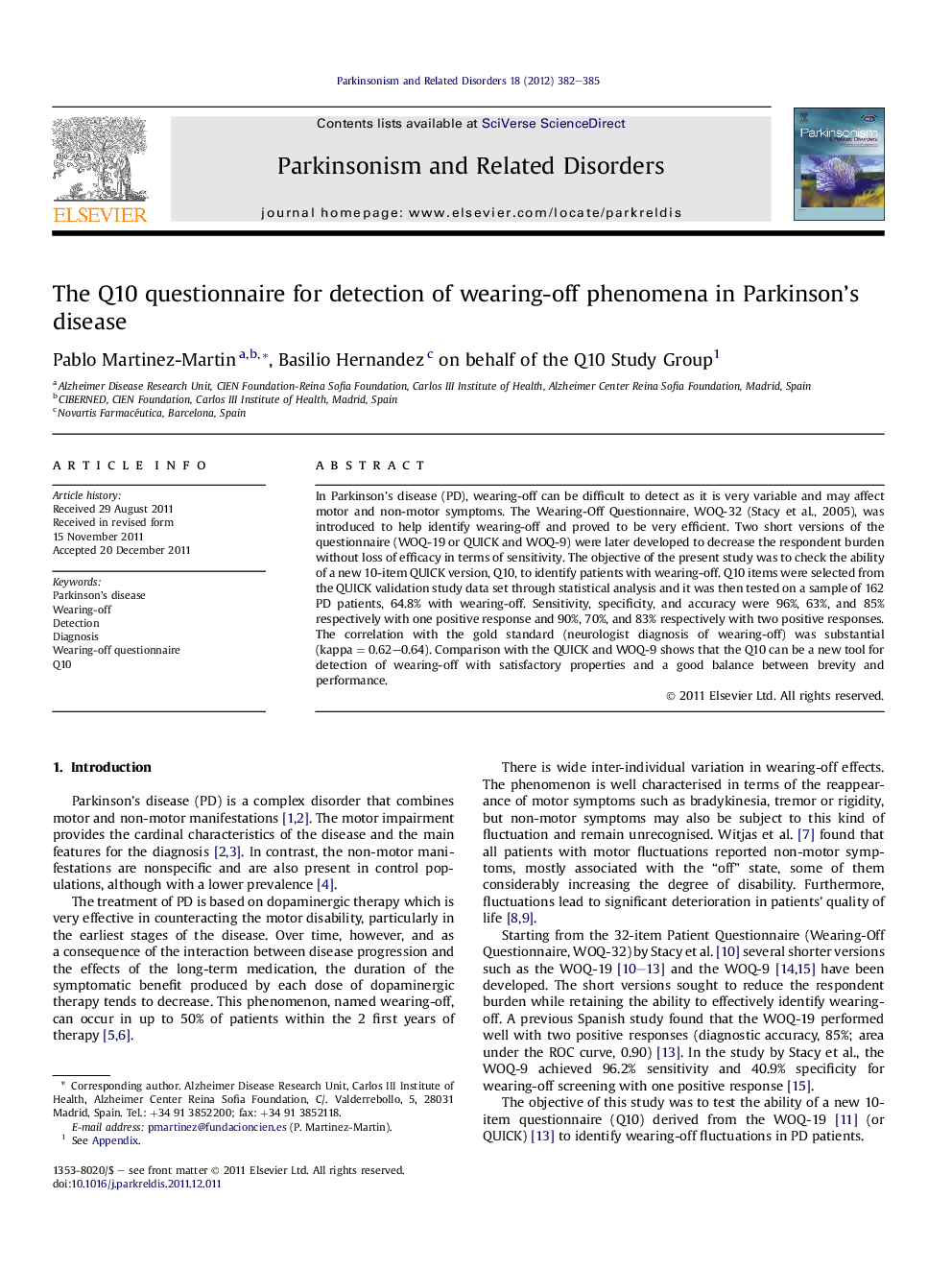| Article ID | Journal | Published Year | Pages | File Type |
|---|---|---|---|---|
| 1920896 | Parkinsonism & Related Disorders | 2012 | 4 Pages |
In Parkinson’s disease (PD), wearing-off can be difficult to detect as it is very variable and may affect motor and non-motor symptoms. The Wearing-Off Questionnaire, WOQ-32 (Stacy et al., 2005), was introduced to help identify wearing-off and proved to be very efficient. Two short versions of the questionnaire (WOQ-19 or QUICK and WOQ-9) were later developed to decrease the respondent burden without loss of efficacy in terms of sensitivity. The objective of the present study was to check the ability of a new 10-item QUICK version, Q10, to identify patients with wearing-off. Q10 items were selected from the QUICK validation study data set through statistical analysis and it was then tested on a sample of 162 PD patients, 64.8% with wearing-off. Sensitivity, specificity, and accuracy were 96%, 63%, and 85% respectively with one positive response and 90%, 70%, and 83% respectively with two positive responses. The correlation with the gold standard (neurologist diagnosis of wearing-off) was substantial (kappa = 0.62–0.64). Comparison with the QUICK and WOQ-9 shows that the Q10 can be a new tool for detection of wearing-off with satisfactory properties and a good balance between brevity and performance.
